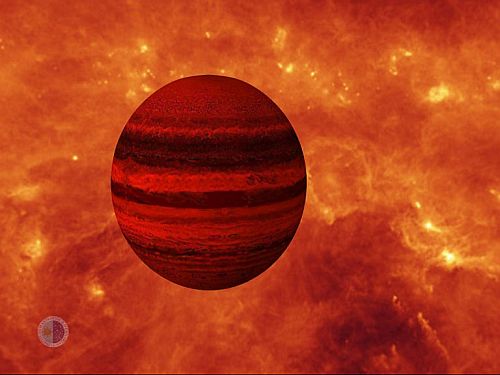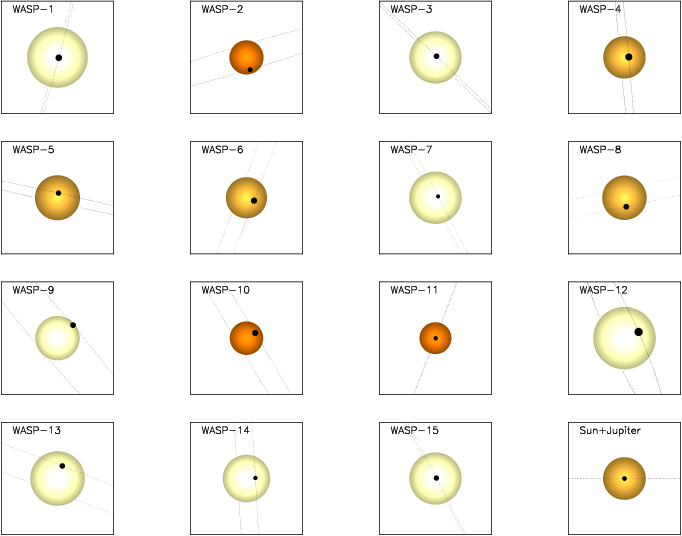Fantastic Trailer for the International Year of Astronomy 2009. I got goosebumps all over me!
April 30, 2008
April 27, 2008
Exoplanetology Entwined
April 24, 2008
Free eBook for Amateur Exoplanetologists
For the aspiring Amateur Exoplanetologists, this book is for you. Its called Exoplanet Observing For Amateurs. The bad news is that it's out of print (the author, Bruce L. Gary says so himself). The good news is that it's an eBook, and so can be printed on demand! Bruce has been so generous as to provide this awesome resource for Exoplanet enthusiasts.
However, there is one caveat. If you think you aren't ready yet for this book, then do a quick read on Differential Photometry. Apparently, it's the litmus test to know whether you are ready to tackle Amateur Exoplanetology using this book. Go get yourself ready for the planet-hunt!
Links:
Bruce L. Gary's Website
eBook (PDF): Exoplanet Observing For Amateurs
However, there is one caveat. If you think you aren't ready yet for this book, then do a quick read on Differential Photometry. Apparently, it's the litmus test to know whether you are ready to tackle Amateur Exoplanetology using this book. Go get yourself ready for the planet-hunt!
Links:
Bruce L. Gary's Website
eBook (PDF): Exoplanet Observing For Amateurs
April 22, 2008
Exoplanetary Plants
We have often set our imaginations on discovering animal-like creatures on other worlds. Yet the first forms of life that we might likely find are alien plants. It makes sense. Plants definitely have to come first as food for more advanced creatures. They are after all, at the base of the food chain. So they must be pretty abundant.
Astrobiologists are now investigating the possible forms and properties of exoplanetary plants based on the myriad of combinations of exoplanets and their parent star's properties. In fact, it's the parent star that may have the most effect on the look-and-feel of flora on other worlds, because plants depend mostly on light, which depend on what type of star their 'Sun' is.
For example, a Red Dwarf would be so feeble that the plant life would have to be dark to absorb as much light as possible. They may also have to grow large leaves to cover as much area for collecting more light. On the other hand, a hotter-than-usual exoplanet close to it's parent star might have vegetation that is light-colored to reflect most of the light. It might even be transparent to avoid getting fried. These and all other 'alien plant' characteristics are fun to imagine by exploring the different configurations of exoplanetary systems.
Other Links:
The Color of Plants on Other Worlds
April 20, 2008
Other Platforms of Life

Imaginary but possible lifeforms on a jupiter-like planet. Photo from page 42 of Carl Sagan's Cosmos.
I'm reminded of the musings and calculations of the late Carl Sagan (with his colleague E. E. Salpeter) regarding the form of life that may arise from a Jupiter-like planet. They would look like gigantic Jellyfish basked in gasses (such as ammonia and methane) that may be poisonous to us, but is the basis of their very life.
Because life that happens to sprout in a certain environment thrives off the available "resources" that happen to be there. We've seen it in extremophiles on our very own planet. It may very well be the case elsewhere.
With the multitude of combinations of different properties of stars and exoplanets (such as mass, temperature, chemical make-up) the possibilities and variety of life across the universe might be endless and may be totally anything we could ever imagine.
April 6, 2008
Exoplanetology Trends, Statistics, Charts and Graphs
Trendrr is a new site that allows users to manipulate a growing number of publicly available data sets. Users can also input custom data programmatically or by hand. Once Trendrr is tracking your data, it can then be mashed up into comparison graphs, as what is evident in the 3rd graph. With that kind of flexibility coupled with my curiosity, I might try to input some more historical data from the Exoplanet Catalogues and then perhaps build another mash-up of how media and the masses (blogosphere) respond to new discoveries in Exoplanetology. Or maybe I might build a widget out of it since Trendrr can export data in JSON format. So with the synthesis of Science, Web2.0 and Media the possibilities are endless, and literally out of this world!!!
April 3, 2008
WASP Exoplanets Follow-up
As promised, the 10 new wasp planets are now in the Freebase Catalogue of exoplanets, WASP-6b all the way to WASP-15b. As there are still some discrepancies in data, I am still reluctant to add more specific numbers in there. Concurrently, I've been discussing with the folks at Freebase on how to effectively catalog exoplanets and all its properties. And also hoping it could be placed within the Freebase's Astronomy domain for a wider public use and exposure. I also plan to create a Freebased Widget sometime in the future.
Learning as I go, I discovered some differences in how exoplanet data are represented compared to regular planets. One of the differences I notice is in the unit of measurement used for Mass and Radius: For planets "Earth Mass" is used, whereas exoplanets use "Jupiter Mass".
Being a new field, Exoplanetary Science or Exoplanetology is still in its infancy. So if anyone wants to be part of this growing field of science, feel free to join in and be part of history.
More Links:
Centauri Dreams on the WASP exoplanets
Exoplanet Data From SuperWASP
Sky and Telescope News
Learning as I go, I discovered some differences in how exoplanet data are represented compared to regular planets. One of the differences I notice is in the unit of measurement used for Mass and Radius: For planets "Earth Mass" is used, whereas exoplanets use "Jupiter Mass".
Being a new field, Exoplanetary Science or Exoplanetology is still in its infancy. So if anyone wants to be part of this growing field of science, feel free to join in and be part of history.
More Links:
Centauri Dreams on the WASP exoplanets
Exoplanet Data From SuperWASP
Sky and Telescope News
April 1, 2008
No Joke: 10 New Exoplanets for April 1st!

WASP-3b: One of the Extrasolar planets discovered by SuperWASP. WASP-3b is one of hottest exoplanets ever detected. It was discovered in 2007.
The SuperWASP cameras work as robots, surveying a large area of the sky at once. Each night astronomers receive data from millions of stars. They can then check for transits and hence planets. The transit technique also allows scientists to deduce the size and mass of each planet.
A total of 46 planets have been found to transit their stars. Since they started operation in 2004, the SuperWASP cameras have found 15 of these. SuperWASP is the most successful transit survey in the world.
After they formally announce their findings at the Royal Astronomical Society's National Astronomy meeting in the U.K. on Wednesday, April 2, I will then add the names of the new extrasolar planets into the Exoplanetology Catalogue on Freebase.
This is wonderful news for the field of Exoplanetology! Way to go SuperWASP!
link: Eurekalert
Tags:
Catalogue,
discovery,
Exoplanet,
Exoplanetology,
Freebase,
SuperWASP,
Transit Method
Subscribe to:
Posts (Atom)



